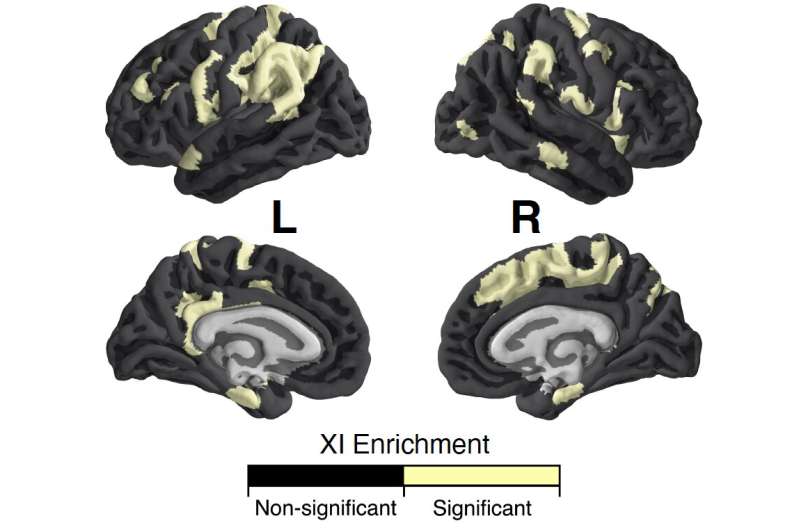

Past neuroscience research suggests that common differences in people’s genetic profiles can explain a significant proportion of variations in people’s brain anatomy. In more specific terms, they found that neuroanatomical variation is partly explained by genetic variation.
Scientists have hypothesized that the X-chromosome has a particularly crucial influence on the brain, as it is known to be associated with the expression of many genes. In addition, several types of intellectual disabilities have been found to be related with mutations of genes on the X chromosome.
Researchers at the National Insitute of Mental Health Intramural Research Program and the National Institutes of Health and Mental Health in Bethesda have recently carried out a study investigating the role of the X-chromosome on human brain anatomy. Their findings, published in a paper in Nature Neuroscience, highlight the key role of the X-chromosome in human neurodevelopment.
“All existing studies investigating the role of genetics on brain anatomy excluded the X-chromosome, which accounts for about 5% of our genomes,” Armin Raznahan, one of the researchers who carried out the study, told Medical Xpress. “We thought it would be important to address this gap because—beyond the basic need to complete the missing analysis—there were lot of existing hints that the X-chromosome might actually have a special capacity to explain variation in brain anatomy.”
The first reason why Raznahan and his colleagues decided to investigate the role of the X-chromosome in neuroanatomical development is that compared to other chromosomes, X-chromosome genes are known to be more expressed in the brain. In addition, in a series of past studies focusing on genetic disorders, the team found that carrying an unusual number of X-chromosomes can have a prominent impact on the brain anatomy of humans.
“Prior research relating common genetic variation to variation in brain anatomy had shown that each chromosome contributes to this relationship in proportion to its relative length: longer chromosomes account for a larger chunk of the variation in brain anatomy that is explained by the genome,” Raznahan said. “So, as a toy example, if a common genetic variation explains 30% of variation in total brain volume, then a chromosome which represents 10% of the genome would explain 3% of variation in total brain volume.”
The X-chromosome consists of approximately 5% of the total genome. Taking this into consideration, Raznahan and his colleagues calculated the proportion of anatomical variation that could be explained by the X-chromosome. They found that given its known size and the percentage of the human genome it represents, the proportion they calculated differed significantly from the expected proportion.
Raznahan and his colleagues performed their calculations using data from the UK Biobank. The UK Biobank is a renowned past research effort aimed at collecting of both brain scans and genetic data from thousands of individuals.
“The main take-aways from our studies are that the X-chromosome does indeed ‘punch above its weight’ in its capacity to explain differences in brain anatomy and that this phenomenon seems to be concentrated in particular brain systems important for complex thinking, decision making and action,” Raznahan said. “In terms of practical implications—we think this finding tells us that we really do need to put an end to exclusion of the X-chromosome from genetic analyses of the brain and related traits such as cognition and behavior.”
The findings gathered by this team of researchers significantly enrich the current understanding of the X-chromosome’s role in human neurodevelopment. In the future, they could inform new genome-wide association studies that take the X-chromosome into account.
“Our study poses lots of questions for future research,” Raznahan said. “For example—if the X-chromosome is enriched for its capacity to influence brain anatomy, what about its influence on brain function as measured in the scanner or as differences in thinking or behavior? Also how is this enriched influence achieved and what cellular processes, in which cells as what stages of development is the X showing a special influence on?”
Source: Read Full Article